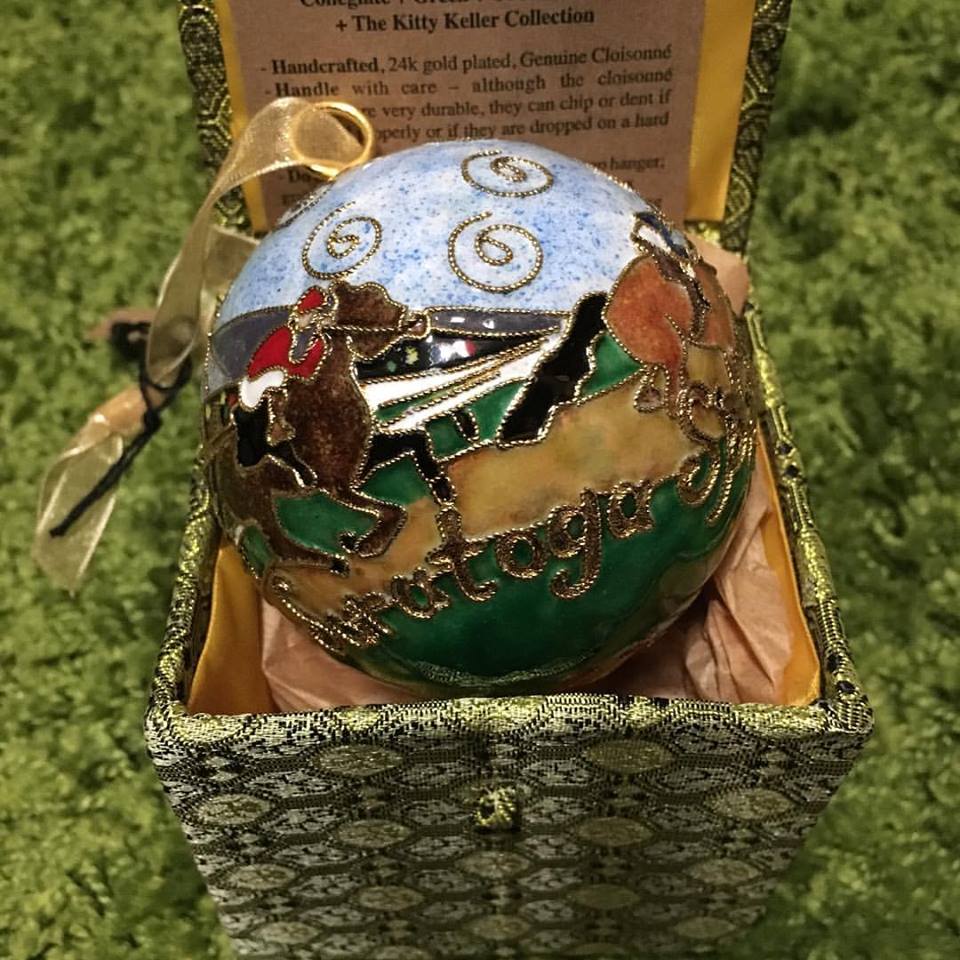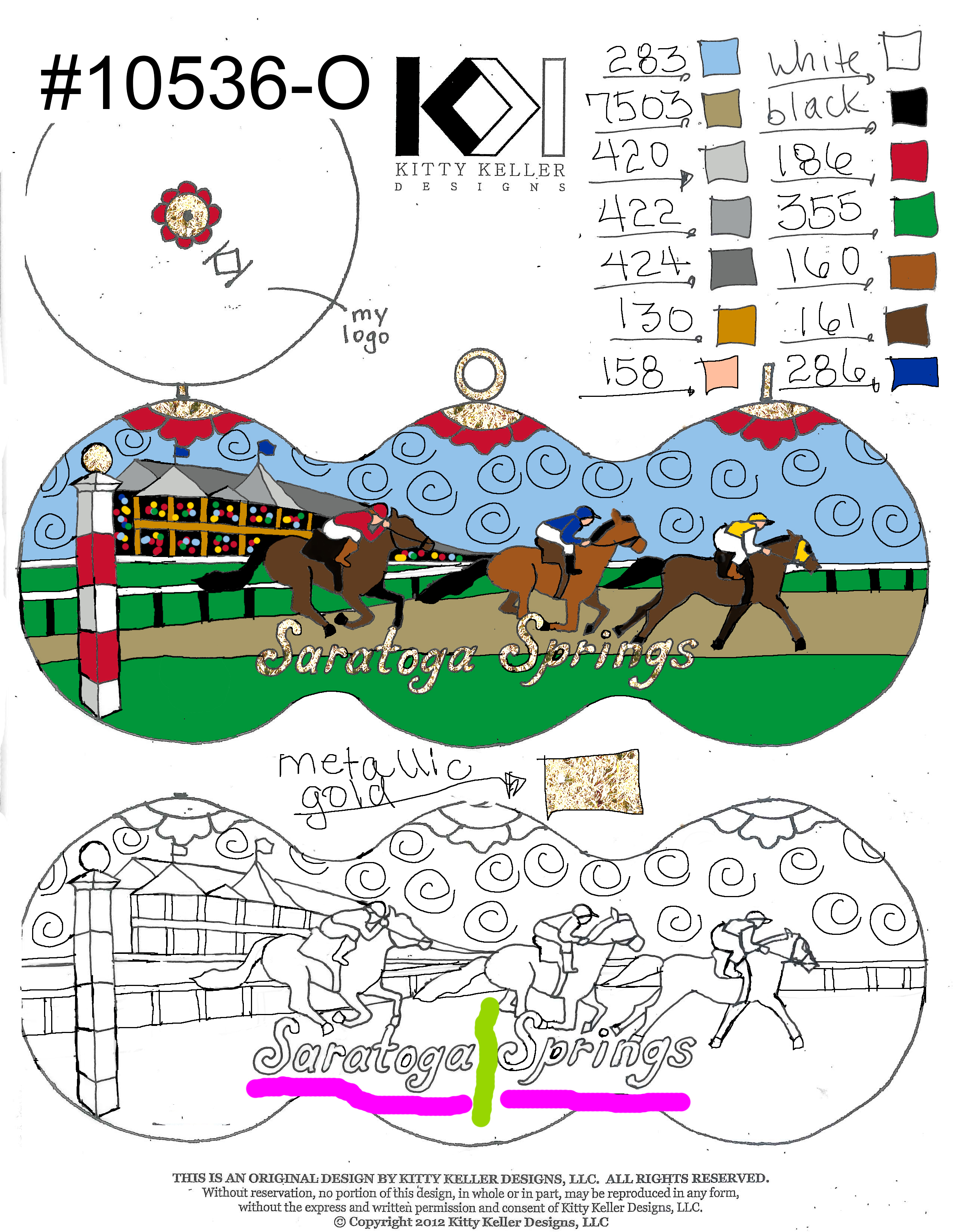
We commissioned the well-known design house of Kitty Keller in Texas, to create this amazing Limited Edition Cloisonné Ornament! We love the rich colors and amazing details. They so quickly transform a keepsake into an heirloom to last generations.
The first step in the process was to design a compelling composition. Here is our original sketch!

The following explaination of the process is taken from Kitty Keller’s website. We could not describe the process any more clearly!
“What makes this ornament so special?
Cloisonné is a complicated and delicate process achieved entirely by hand. Examples of Chinese Cloisonné go back many centuries. Cloisonné is characterized by brilliant colors and great artistic design which is appreciated by collectors all over the world. Although China has been the center of Cloisonné production for centuries, the art of cloisonné did not originate there.
The name itself is not oriental in origin as it is derived from the French word for partition or compartment, “cloisen.” The term seems to have come from the Jesuit missionaries to China who named the art form. The Chinese term for cloisonné is “Jingtal Lan” derived from the Ming dynasty emperor Jingtai, who ruled from 1450 to 1457.

The artisans form the shape by hammering sheets of copper into an internal body.

A design is drawn onto the copper form using a pencil. Artisans then begin attaching copper filaments to the ornament. These filaments create small compartments called “cloisons.”

The “cloisons” or cells of the design are filled with the first coat of enamel pastes using miniature spatulas, a different one for each color. When the paste has dried, it is put into a kiln fired at 800 degrees C for a few minutes. The dried paste then melts and solidifies. As the pastes do not resemble the actual colors of the enamel after firing, the process is tedious and requires the artisan to clearly visualize the look of the finished ornament.

A second coat of colors and firing is done. Because the enamels shrink with fir-ing, repeated applications and firings are necessary to fill the cells to overflowing.

A final coat of colors and final firing is finished.

When the enameling is complete, artisans rub the uneven surface with slurry and char-coal until it is smooth and flush with the edges of the cloisons and the copper wires are exposed.

Then, it is buffed and polished with sheep skin.

Finally, the exposed edges of the copper wires and top and bottom of the ornament are electroplated with 24 karat gold to bring the piece to life.”




